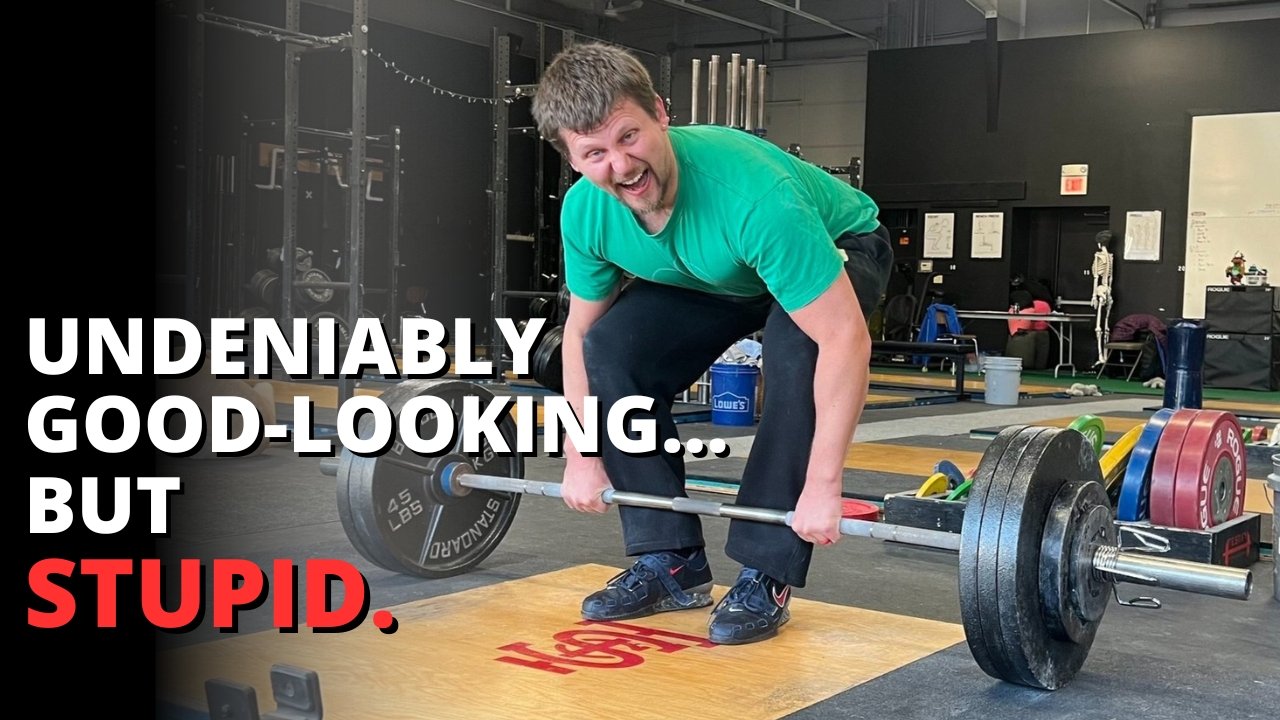Deadlift Tip: Quit Bending Your Arms!
/(A Blast from the Past article originally posted on 01/07/22)
Here’s a quick deadlift tip: Don’t Bend Your Arms.
Ever.
don’t be like this fool when setting up to pull.
This will seem rather obvious to many people - after all, who would voluntarily try to pull a heavy weight off the floor with bent arms? Nonetheless, this problem shows up in the setup for some lifters, and interestingly enough, it will occasionally rear its ugly head on the pull itself.
If you have this issue in your setup, remember that, when you bend your knees slightly to touch your shins to the bar, the knees go out (i.e., sideways) slightly and touch the inside of your elbows. Don’t shove the knees out so hard that you end up causing your elbows to bend. This is what we like to refer to as . . . ridiculous.
This . . . is much better.
Whether you’re setting up or pulling, remember - keep your arms straight. Bent arms are highly inefficient when pulling heavy weights off the floor . . . and they just look so silly. Don’t be silly.
We hope this helps you get stronger and live better!
(Some links may be affiliate links. As an Amazon Associate, Testify earns from qualifying purchases.)






